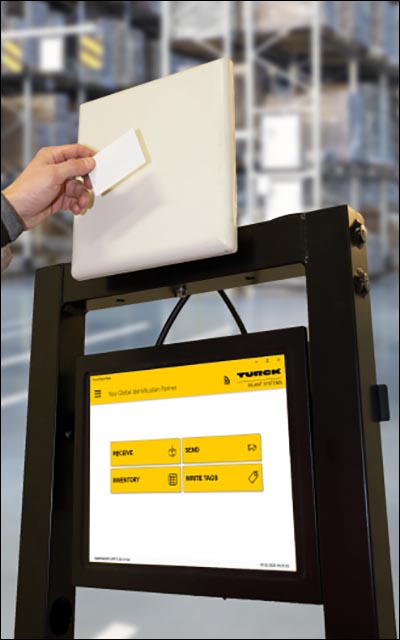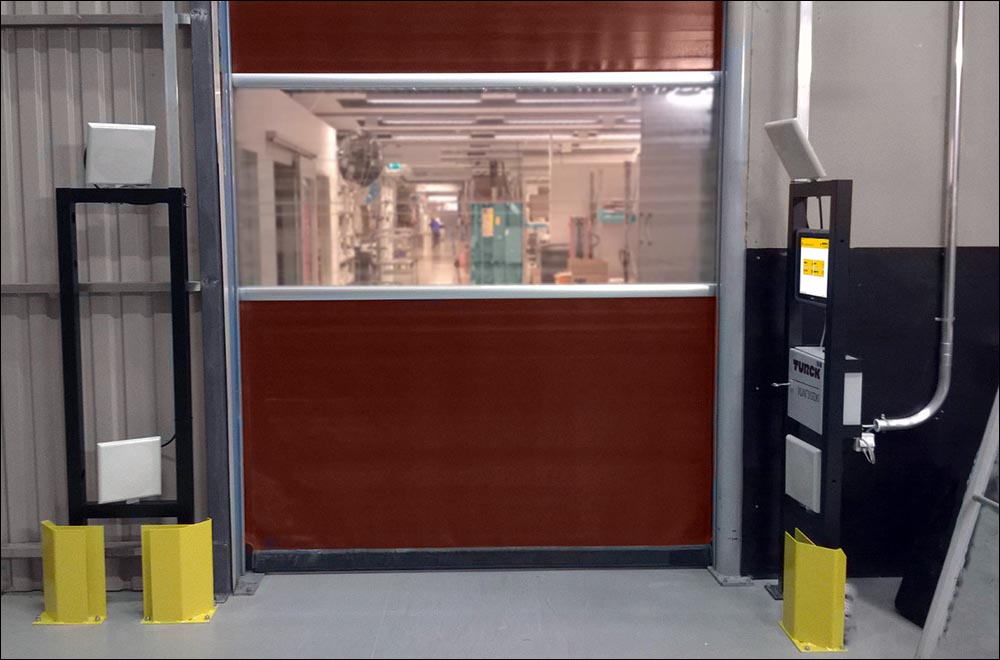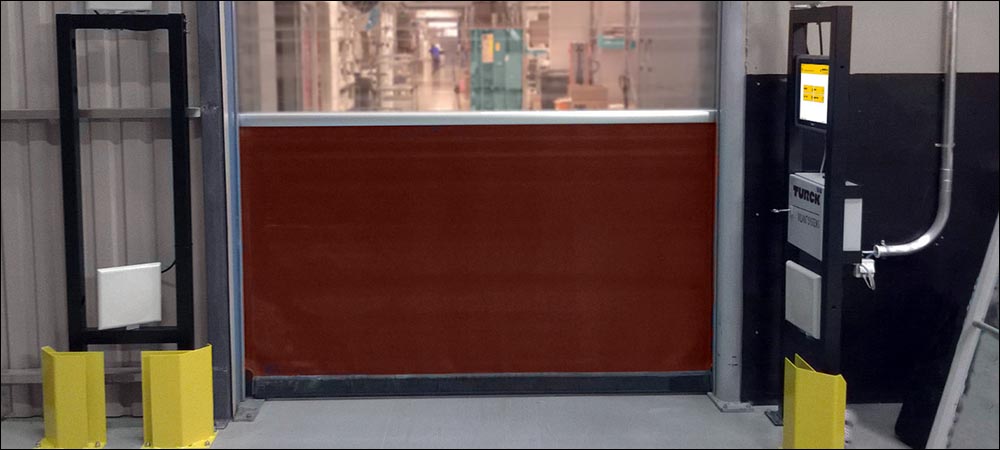Several U.S. companies have begun planning pilots or deployments of a new RFID system provided by Turck Vilant Systems known as a UHF RFID Gate, designed for high-traffic environments like warehouse dock doors and factories. The gate, already in use in Europe, comes with software that calculates where tags are located, filters out stray reads and identifies the direction of goods passing through it. Turck demonstrated the product at this year’s RFID Journal Virtually LIVE! conference and exhibition.
The German industrial automation manufacturer operates an RFID division that develops and sells UHF and HF RFID readers, including handheld devices, safety switches and read-write heads that can be used with industrial equipment. The company’s customers include automotive, chemical, and food and beverage manufacturers, as well as oil and gas and logistics firms. Turck has been developing solutions for the industrial market that employ ruggedized UHF RFID readers, as well as hybrid UHF and HF RFID readers. It acquired Finnish technology company Vilant Systems in 2017 (see Turck Group Acquires Vilant Systems, Becomes Europe-Based Solutions Provider),

Turck’s RFID products have traditionally leveraged passive HF RFID primarily, but in recent years, the firm has been moving into UHF RFID-based solutions. Companies that had used HF RFID to identify items such as components for assembly have been finding benefits in tracking goods moving through their facilities on pallets or in cartons, or in monitoring them at the item level, and UHF is well suited for this use case. However, Turck found that its industrial customers faced challenges when it comes to UHF’s relatively longer range than HF RFID, and the potential for stray reads when many dock doors are situated next to each other, or if stationary items are staged near doors.
Turck designed the UHF RFID Gate to enable fixed RFID reading capability that is highly accurate around multiple dock doors. To accomplish this goal, says Raymond Wenzel, a Turck RFID product specialist, the company developed algorithms based on signal characteristics so that read accuracy would be ensured. The firm also provides software to analyze read data, he says, in order to link each tag with a specific dock door, for instance, which can then be integrated into a user’s own management software or hosted by Turck on a cloud-based server.
European manufacturers and logistics providers have typically mounted the new reader over their warehouse dock door frames or within assembly sites. Now the company is bringing the product to North America as well. Turck cites U.S. government regulations that are driving manufacturers to track products, especially in the pharmaceutical and food industries, for quality-assurance purposes. In the meantime, an American original equipment manufacturer (OEM) of robots—which has asked to remain unnamed—is using the technology to identify when finished products leave its facility bound for customer sites.
The gate comes with a single UHF RFID reader mounted above a portal, along with four antennas—two on each side of the portal—to capture the movements of tags as they pass through or near that area. The system is designed so that users can receive an alert in real time if goods are being loaded at the wrong gate, which would indicate they are being loaded onto the wrong truck. The readers also come with Turck Vilant software to identify location and movement data, Wenzel says, which can be integrated into a user’s enterprise resource planning (ERP) or SAP system, or be hosted in the cloud.
There are several iterations of the gates; one is designed for use outdoors, while another can be installed inside. The outdoor gate can be covered, and it’s wide enough so that a truck could be driven through it. Indoor gates would be designed for environments in which forklifts or yard tools would drive goods past them. The product has resulted from specific customer requests for an RFID system that is flexible and precise, according to Don Eichman, Turck’s product manager. “One of the primary features of this new product is the stray read filtering,” he adds.
The company developed a set of algorithms to employ received signal strength indicators (RSSI) and related data to understand exactly where a tag is located, as well as whether or not it is moving. With multiple antennas, the gate can identify the direction in which tags move, and the system’s filtering software is designed to ignore stationary objects. To date, companies using the gate have created their own server and software dedicated to the read data, though they can also pay Turck for its own software and cloud-based service if they so choose.

Tucrk is currently in conversations with several U.S.-based customers, including those already using its technology, as well as companies that are not yet employing RFID. Businesses interested in using the new gate include both manufacturers and warehouse operators. The U.S.-based OEM that is utilizing the gate reader captures location data in order to identify tagged finished goods that depart its facility, for the purpose of shipment verification, with another reader installed at a customer site to identify when they are received at that location.
The gate can be used not only for logistics, but for the detection of components arriving on an assembly floor, or for raw materials arriving from vendors. It can also be installed above conveyors at such sites as factors assembly floors. By using the system, Wenzel says, companies can reduce their risk of lost shipments, as well as the costs related to such losses. What’s more, the solution reduces manual labor since workers spend less time recording which items are being shipped or received.
Later this year, Turck hopes to commercially release its Q300 reader, which captures HF and UHF RFID tag reads, as well as barcode data, in the United States. The handheld is unique, the company reports, because it can automatically detect whether a tag in its vicinity is transmitting via 13.56 MHz HF RFID (compliant with the ISO 15693 standard) or UHF RFID, and then capture that read. Typically, dual-frequency RFID readers have needed to be set according to the frequency being read.


